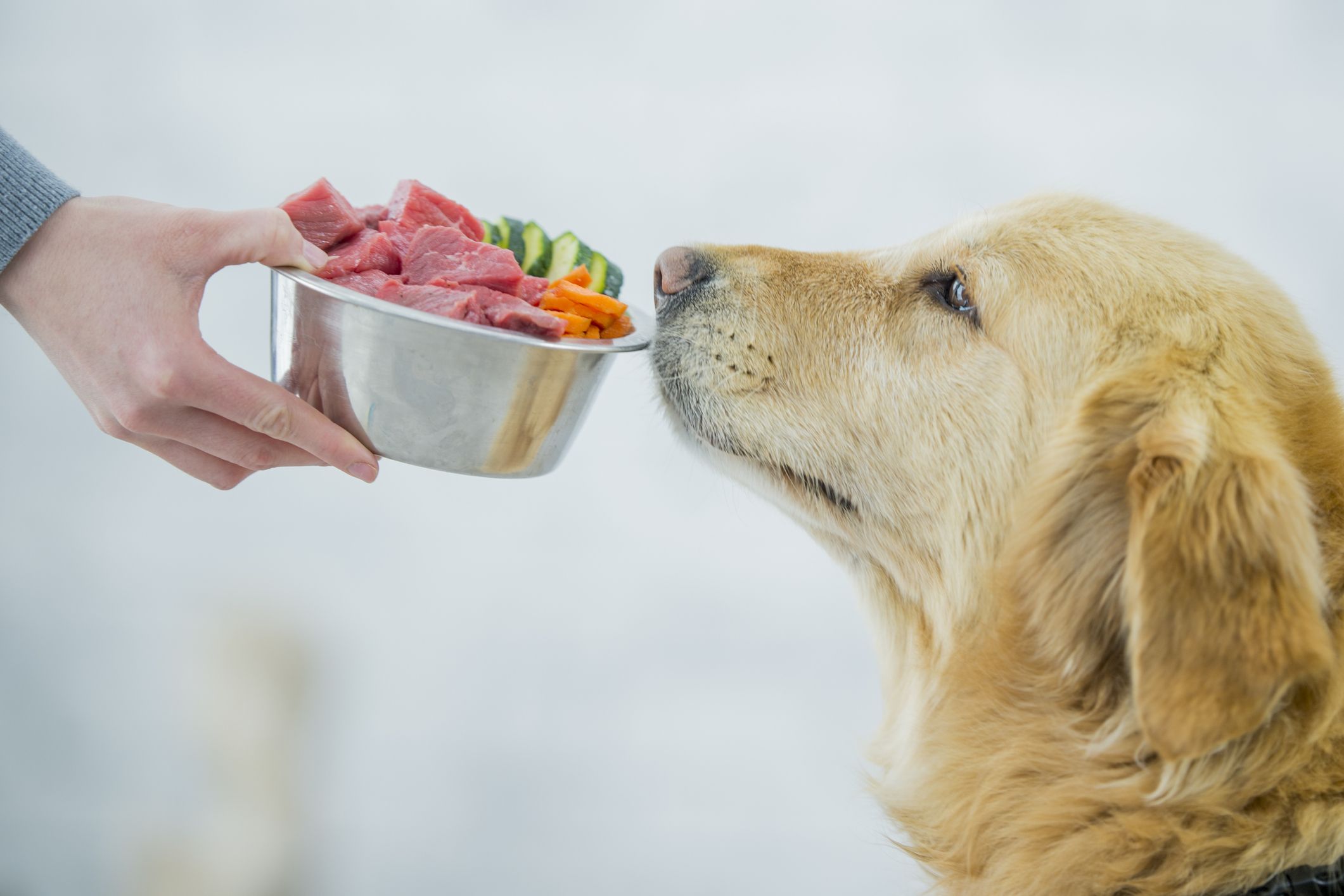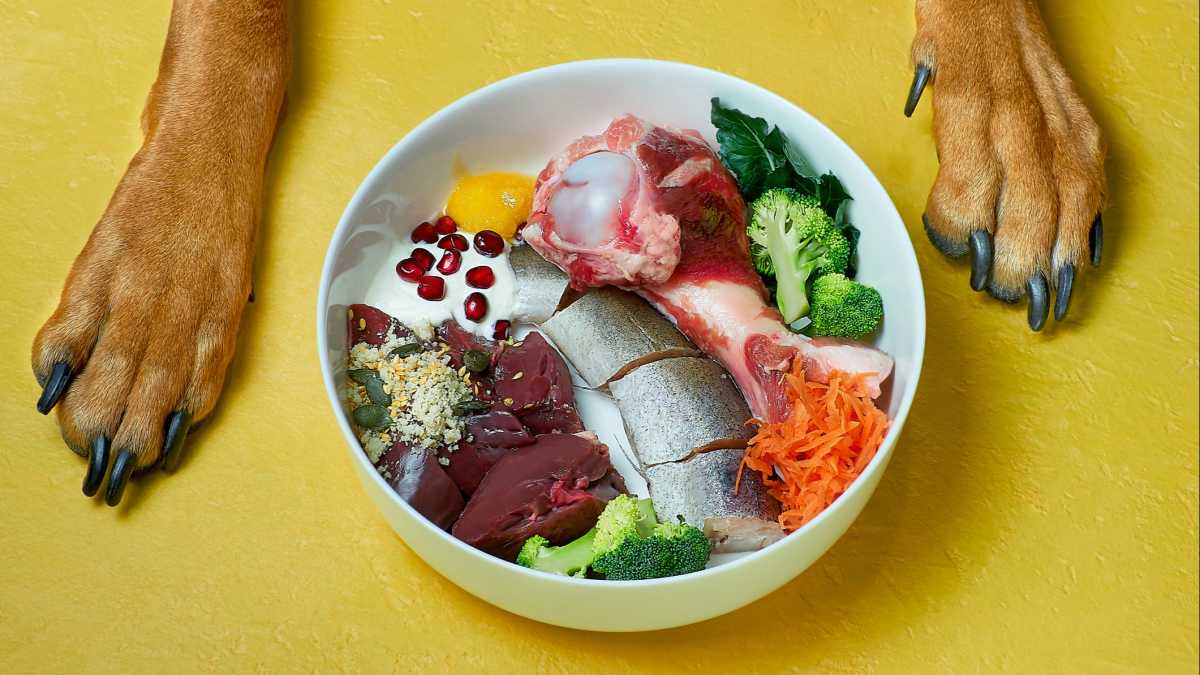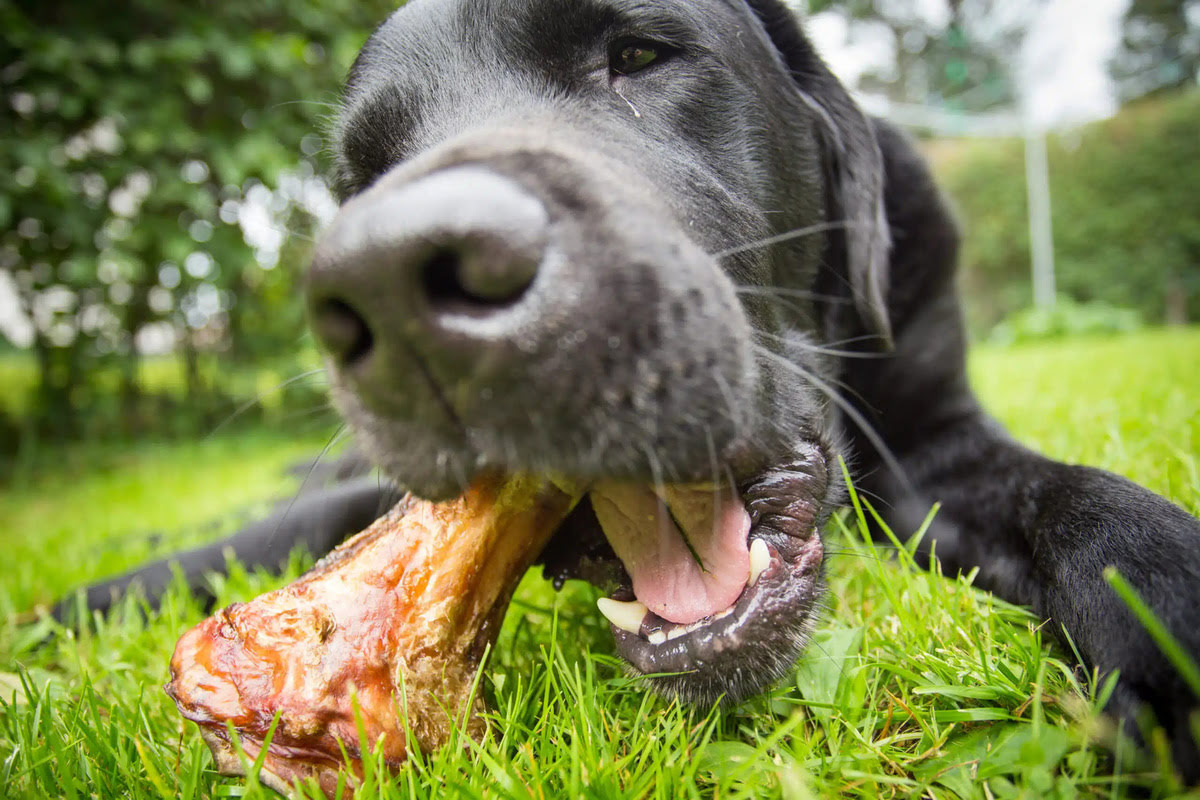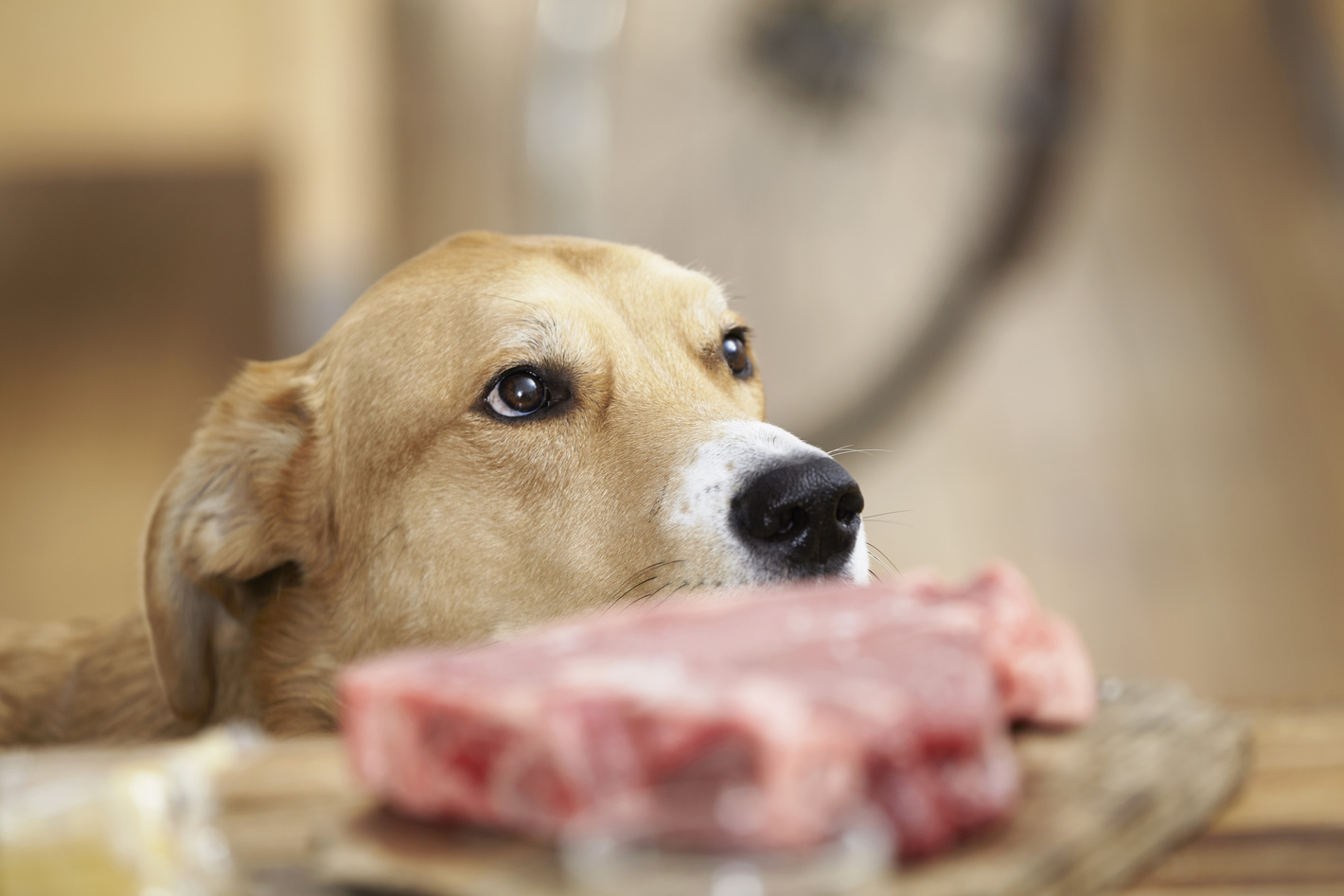Home>Health & Wellness>Nutrition & Diet>How Much Raw Meat Diet Is Needed For Dogs
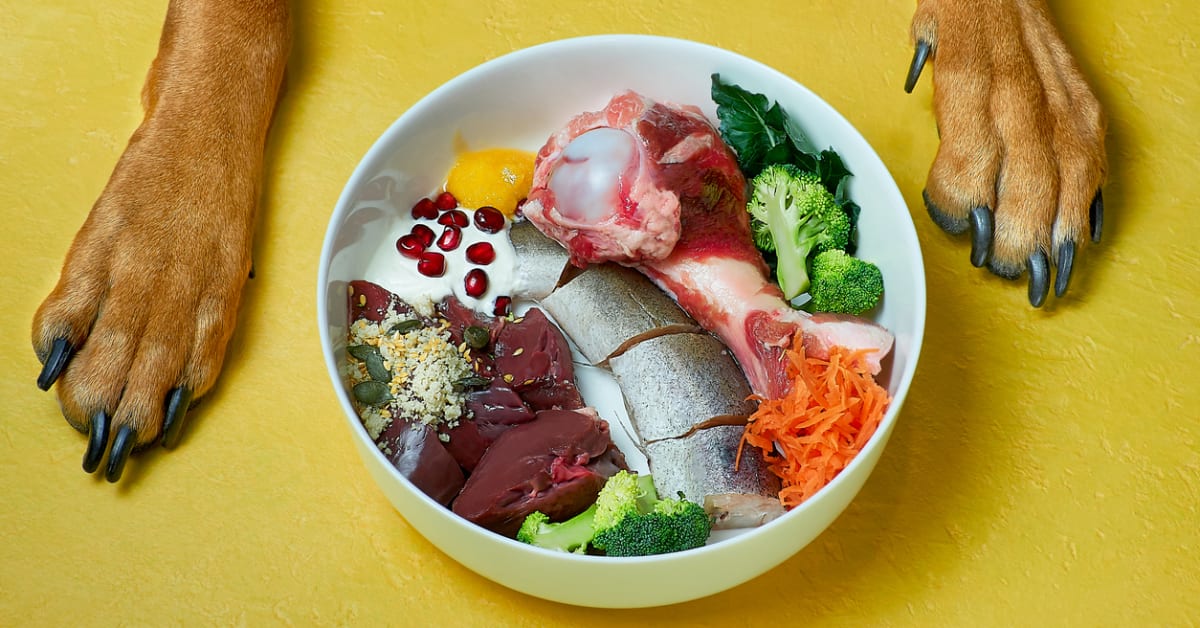

Nutrition & Diet
How Much Raw Meat Diet Is Needed For Dogs
Published: January 28, 2024
Discover the ideal raw meat diet for dogs and ensure their optimal nutrition and diet with expert guidance. Learn how much is needed for a balanced and healthy canine diet.
(Many of the links in this article redirect to a specific reviewed product. Your purchase of these products through affiliate links helps to generate commission for Pawsomeoldies.com, at no extra cost. Learn more)
Table of Contents
Introduction
The debate over the ideal diet for dogs has been ongoing for years, with various feeding regimens and philosophies gaining popularity. One approach that has garnered significant attention is the raw meat diet for dogs. This diet, often referred to as the "BARF" diet (Biologically Appropriate Raw Food), emphasizes feeding dogs uncooked meat, bones, and organs, mimicking the diet of their wild ancestors.
Advocates of the raw meat diet for dogs assert that it offers numerous benefits, including improved digestion, healthier skin and coat, increased energy levels, and better dental health. Proponents also argue that this diet aligns with a dog's natural dietary needs, as their ancestors primarily consumed raw meat in the wild.
However, it's important to note that the raw meat diet for dogs is not without controversy. Critics raise concerns about the potential risks of bacterial contamination, nutritional imbalances, and the lack of scientific evidence supporting its long-term health benefits.
Despite the ongoing debate, many dog owners are intrigued by the concept of providing their furry companions with a diet that closely resembles what they would consume in the wild. As a result, the raw meat diet for dogs continues to spark curiosity and interest among pet owners seeking to optimize their canine companions' well-being.
In the following sections, we will delve into the potential benefits of the raw meat diet for dogs, explore their nutritional requirements, discuss the appropriate quantity of raw meat to feed them, and consider important factors to bear in mind when implementing this dietary approach. By gaining a comprehensive understanding of these aspects, dog owners can make informed decisions regarding their pets' nutrition and overall health.
Benefits of Raw Meat Diet for Dogs
The raw meat diet for dogs has gained attention due to its potential to offer several benefits that align with a dog's natural dietary needs. Advocates of this diet emphasize the following advantages:
-
Improved Digestion: Proponents of the raw meat diet assert that it can enhance a dog's digestive health. Raw meat contains natural enzymes and nutrients that may support optimal digestion, potentially reducing issues such as bloating, gas, and diarrhea.
-
Healthier Skin and Coat: A raw meat diet is often associated with improvements in a dog's skin and coat health. The essential fatty acids present in raw meat, such as omega-3 and omega-6, are believed to contribute to a shinier coat and healthier skin, potentially reducing itching and dryness.
-
Enhanced Energy Levels: Some dog owners report observing increased energy and vitality in their pets after transitioning to a raw meat diet. Advocates suggest that the high-quality protein and natural nutrients in raw meat may support overall energy levels and vitality in dogs.
-
Better Dental Health: Chewing on raw meaty bones is a fundamental aspect of the raw meat diet for dogs. Advocates argue that this natural chewing activity can help maintain dental health by reducing plaque and tartar buildup, promoting healthy gums, and providing mental stimulation.
-
Potential Allergy Relief: For dogs with food sensitivities or allergies, the raw meat diet may offer relief. By eliminating common allergens found in commercial dog foods, such as grains and artificial additives, some dogs may experience reduced allergic reactions and improved overall well-being.
-
Support for Weight Management: The raw meat diet's emphasis on high-quality protein and natural nutrients may aid in weight management for dogs. Proponents suggest that this diet can help maintain lean muscle mass while providing essential nutrients, potentially supporting healthy weight levels.
While these potential benefits are often cited by advocates of the raw meat diet for dogs, it's essential to approach this dietary approach with careful consideration and awareness of potential risks and nutritional requirements. Understanding the specific needs of individual dogs and consulting with a veterinarian can help ensure that the raw meat diet is implemented safely and effectively.
By considering these potential benefits and understanding the nutritional aspects of the raw meat diet, dog owners can make informed decisions regarding their pets' dietary choices, aiming to support their overall health and well-being.
Nutritional Requirements for Dogs
Ensuring that dogs receive a balanced and complete diet is essential for their overall health and well-being. When considering the nutritional requirements for dogs, it's crucial to understand the specific nutrients that contribute to their optimal growth, development, and vitality.
Essential Nutrients
Dogs require a combination of essential nutrients to thrive, including:
-
Protein: An essential component for muscle development, tissue repair, and overall growth. High-quality protein sources, such as meat, fish, and eggs, are vital for meeting a dog's protein needs.
-
Fats: Essential fatty acids, such as omega-3 and omega-6, play a crucial role in maintaining healthy skin and coat, supporting cognitive function, and promoting overall cellular health.
-
Carbohydrates: While not considered essential, carbohydrates can provide a source of energy and fiber in a dog's diet. Whole grains, fruits, and vegetables can contribute to a well-rounded canine diet.
-
Vitamins and Minerals: A wide range of vitamins and minerals, including vitamin A, vitamin D, calcium, and phosphorus, are necessary for various physiological functions, such as bone health, immune system support, and vision.
Considerations for Raw Meat Diet
When implementing a raw meat diet for dogs, it's important to ensure that the diet meets their nutritional requirements. Raw meat, bones, and organs can provide valuable nutrients, but careful attention must be given to achieving a balanced and complete diet. Factors to consider include:
-
Protein Quality: Selecting high-quality, lean meats and incorporating a variety of protein sources can help ensure that dogs receive adequate essential amino acids for optimal health.
-
Calcium and Phosphorus: Balancing the calcium and phosphorus content in the diet is crucial for bone health. Including raw meaty bones as a source of these minerals can be beneficial, but it requires careful monitoring to prevent imbalances.
-
Supplementation: In some cases, supplementation with essential nutrients, such as omega-3 fatty acids or certain vitamins, may be necessary to address potential deficiencies in a raw meat diet.
Read more: How Do I Switch My Dog To A Raw Food Diet
Consultation with a Veterinarian
Understanding the nutritional requirements for dogs and how they relate to a raw meat diet is a complex endeavor. Consulting with a veterinarian who has expertise in pet nutrition is highly recommended. A veterinarian can provide tailored guidance, assess a dog's individual nutritional needs, and offer recommendations to ensure that the raw meat diet is appropriately balanced and meets the specific requirements of the dog in question.
By carefully considering the essential nutrients required by dogs and the specific considerations related to a raw meat diet, dog owners can take proactive steps to provide their pets with a nutritionally sound and well-rounded diet, promoting their long-term health and vitality.
How Much Raw Meat to Feed Dogs
Determining the appropriate quantity of raw meat to feed dogs is a crucial aspect of implementing a raw meat diet. The ideal amount of raw meat required for a dog is influenced by various factors, including the dog's size, age, activity level, and overall health. While there is no one-size-fits-all approach, dog owners can consider several guidelines to help determine the appropriate portion sizes for their canine companions.
Considerations for Portion Sizes
1. Weight and Size:
The size and weight of a dog play a significant role in determining the amount of raw meat they should consume. Larger breeds generally require more food than smaller breeds. As a general rule, a dog's daily raw meat portion can range from 2% to 3% of their body weight. For example, a 50-pound dog may require approximately 1 to 1.5 pounds of raw meat per day.
2. Age and Activity Level:
Puppies, lactating or pregnant dogs, and highly active dogs have increased nutritional needs compared to adult dogs with a sedentary lifestyle. Puppies, in particular, require a higher percentage of their body weight in food to support their rapid growth and development. Adjusting portion sizes based on a dog's life stage and activity level is essential to ensure they receive adequate nutrition.
3. Monitoring and Adjusting:
Observing a dog's body condition and weight is crucial when determining the appropriate portion of raw meat. Regular monitoring allows dog owners to assess whether their pet is maintaining a healthy weight and adjust portion sizes accordingly. Factors such as metabolism, individual dietary needs, and any underlying health conditions should also be taken into account.
Feeding Frequency
In addition to portion sizes, the frequency of feeding raw meat to dogs is an important consideration. Many dog owners opt for feeding their pets once or twice a day, while others may prefer smaller, more frequent meals. The chosen feeding schedule should align with the dog's digestive tolerance and overall well-being.
Read more: How Do I Switch My Dog To A Raw Food Diet
Consultation with a Veterinarian
While these guidelines can provide a starting point for determining the appropriate amount of raw meat to feed dogs, consulting with a veterinarian is highly recommended. A veterinarian can offer personalized recommendations based on a dog's specific nutritional needs, health status, and any dietary considerations. This professional guidance can help ensure that a dog's raw meat diet is tailored to support their individual requirements.
By carefully considering the dog's size, age, activity level, and overall health, as well as seeking professional advice when needed, dog owners can establish a balanced and appropriate raw meat feeding regimen for their beloved canine companions.
Factors to Consider When Feeding Raw Meat to Dogs
When embarking on a raw meat diet for dogs, several critical factors warrant careful consideration to ensure the health and well-being of canine companions. These factors encompass a range of considerations, from food safety and sourcing to dietary balance and potential health risks.
Food Safety and Handling
Maintaining strict food safety practices is paramount when feeding raw meat to dogs. Raw meat, including poultry, beef, and fish, can harbor harmful bacteria such as Salmonella and E. coli, posing health risks to both dogs and their human counterparts. Proper storage, handling, and hygiene protocols are essential to minimize the risk of bacterial contamination and foodborne illnesses.
Sourcing High-Quality Ingredients
Selecting high-quality raw meat from reputable sources is fundamental to the success of a raw meat diet for dogs. Opting for human-grade, organic, and ethically sourced meats can help mitigate potential exposure to antibiotics, hormones, and other undesirable additives commonly found in lower-quality meat products. Additionally, sourcing meat from trusted suppliers reduces the likelihood of contamination and ensures a higher standard of nutritional integrity.
Nutritional Balance
Achieving a balanced and complete nutritional profile is a key consideration when formulating a raw meat diet for dogs. In addition to lean meats, the diet should incorporate essential nutrients from a variety of sources, including raw bones, organs, and, in some cases, fruits and vegetables. Balancing the ratios of protein, fat, calcium, and other vital nutrients is crucial to meeting a dog's dietary requirements and promoting overall health.
Potential Health Risks
While proponents of the raw meat diet emphasize its benefits, it's essential to acknowledge potential health risks associated with this feeding regimen. These risks include nutritional imbalances, gastrointestinal issues, and the possibility of bone-related injuries. Careful consideration of a dog's individual health status, dietary sensitivities, and any preexisting conditions is essential to mitigate these risks and ensure the diet aligns with the dog's specific needs.
Consultation with Veterinary Professionals
Seeking guidance from veterinary professionals with expertise in pet nutrition is highly advisable when implementing a raw meat diet for dogs. Veterinarians can offer personalized recommendations, assess the dog's individual nutritional requirements, and provide insights into potential health implications. Regular consultations with veterinarians can help ensure that the raw meat diet is tailored to support the dog's overall well-being.
By conscientiously addressing these factors, dog owners can navigate the complexities of feeding raw meat to their pets, striving to provide a nutritionally sound and well-balanced diet while minimizing potential health risks associated with this dietary approach.
Conclusion
In conclusion, the raw meat diet for dogs presents a dietary approach that has captured the attention of many dog owners seeking to provide their pets with a nutritionally sound and species-appropriate feeding regimen. While the potential benefits of this diet, including improved digestion, healthier skin and coat, enhanced energy levels, better dental health, potential allergy relief, and support for weight management, are compelling, it's essential to approach this feeding regimen with careful consideration and awareness of potential risks and nutritional requirements.
Understanding the nutritional needs of dogs and the specific considerations related to a raw meat diet is crucial for ensuring the long-term health and well-being of canine companions. From essential nutrients such as protein, fats, carbohydrates, vitamins, and minerals to the careful balance required in a raw meat diet, dog owners must navigate a complex landscape to provide their pets with a diet that meets their unique dietary needs.
Determining the appropriate quantity of raw meat to feed dogs involves considering factors such as the dog's size, age, activity level, and overall health. Portion sizes, feeding frequency, and careful monitoring are essential components of implementing a raw meat diet effectively. Seeking professional guidance from veterinarians with expertise in pet nutrition can provide invaluable insights and tailored recommendations to support the individual nutritional requirements of dogs.
Furthermore, critical factors such as food safety and handling, sourcing high-quality ingredients, achieving nutritional balance, and mitigating potential health risks must be carefully considered when embarking on a raw meat diet for dogs. By addressing these factors conscientiously and seeking professional advice when needed, dog owners can strive to provide their pets with a nutritionally sound and well-balanced diet while minimizing potential health risks associated with this dietary approach.
In essence, the decision to transition a dog to a raw meat diet should be approached with thorough research, careful consideration, and consultation with veterinary professionals. By doing so, dog owners can make informed decisions regarding their pets' dietary choices, aiming to support their overall health and well-being through a diet that aligns with their natural dietary needs.


